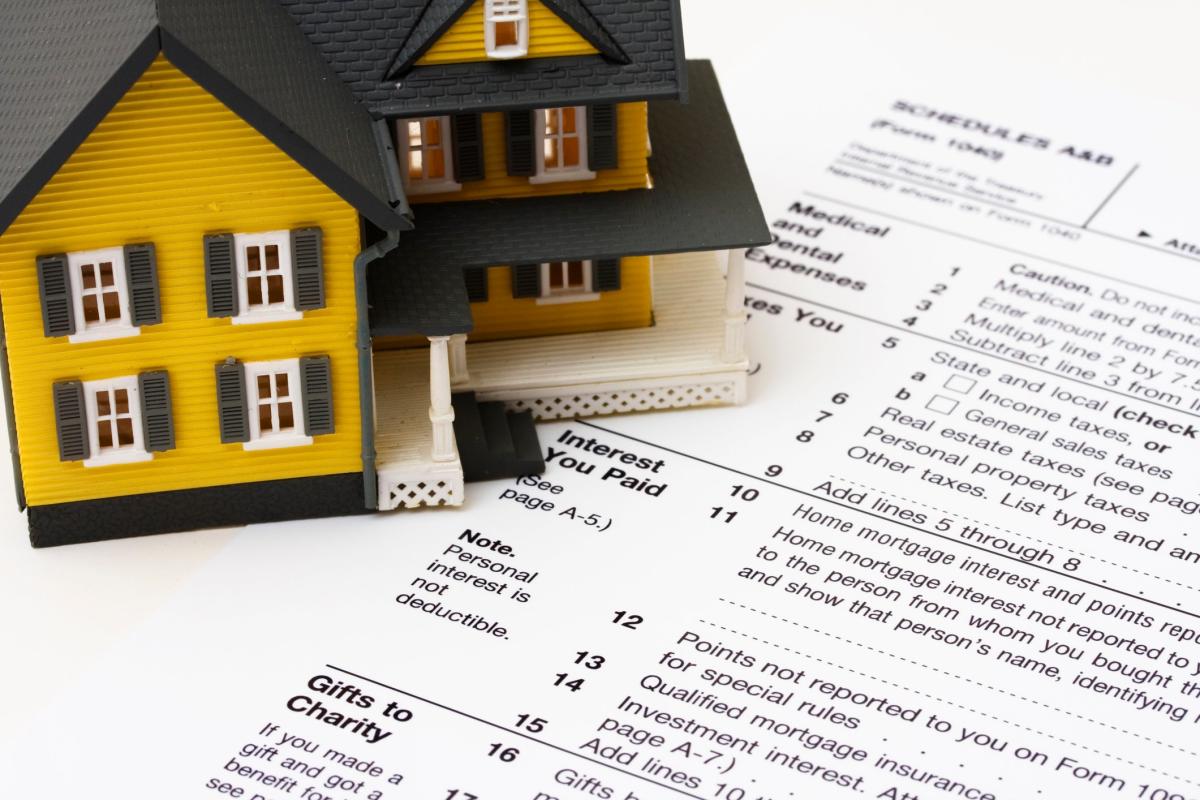HELOC Disclosure Requirements: What You Need to Know

If you're considering a Home Equity Line of Credit (HELOC), it's important to understand the disclosure requirements that lenders must follow. These disclosures are designed to ensure that you have all the information you need to make an informed decision about whether a HELOC is right for you.
What is a HELOC?
A HELOC is a type of loan that allows you to borrow money against the equity in your home. Unlike a traditional home equity loan, which gives you a lump sum of money upfront, a HELOC works more like a credit card. You're given a credit limit, and you can borrow up to that limit as needed. Interest is only charged on the amount you borrow, not the entire credit limit.
What Are the Disclosure Requirements for HELOCs?

HELOC lenders are required by law to provide certain disclosures to borrowers. These disclosures include:
1. The terms of the HELOC: Lenders must provide you with a written document that outlines the terms of the HELOC, including the interest rate, fees, and repayment terms.
2. The costs of the HELOC: Lenders must provide you with an estimate of the costs associated with the HELOC, including any application fees, appraisal fees, and closing costs.
3. Your right to cancel: You have a right to cancel the HELOC within three days of signing the agreement. Lenders must provide you with a notice explaining your right to cancel.
4. Changes to the HELOC terms: Lenders must inform you in writing of any changes to the terms of the HELOC, including changes to the interest rate or repayment terms.
Why are these Disclosures Important?

HELOC disclosures are important because they help you make an informed decision about whether a HELOC is right for you. By providing you with detailed information about the costs and terms of the loan, you can compare HELOCs from different lenders and choose the one that best meets your needs.
Additionally, the disclosure requirements help protect you from unscrupulous lenders who may try to take advantage of you. By requiring lenders to be upfront about the costs and terms of the loan, you can avoid surprises and make sure you're getting a fair deal.
In conclusion, if you're considering a HELOC, it's important to understand the disclosure requirements that lenders must follow. By knowing what information you're entitled to receive, you can make an informed decision about whether a HELOC is right for you and avoid any unpleasant surprises down the road.
Pros and Cons of Disclosure Requirements for HELOCs
Pros of Disclosure Requirements for HELOCs:
-
1. Protects Borrowers: The main benefit of disclosure requirements for HELOCs is that they protect borrowers from unscrupulous lenders. By providing clear and transparent information about the costs and terms of the loan, borrowers can make informed decisions and avoid signing up for loans that are not in their best interest.
-
2. Promotes Fairness: HELOC disclosure requirements promote fairness in the lending process. Lenders are required to provide all borrowers with the same disclosures, which means that everyone has access to the same information. This helps to level the playing field and ensures that borrowers are not taken advantage of.
-
3. Helps Comparison Shopping: Disclosure requirements for HELOCs also make it easier for borrowers to compare different loan offers from different lenders. By having access to clear and consistent information, borrowers can easily compare interest rates, fees, and repayment terms and choose the loan that best meets their needs.
Cons of Disclosure Requirements for HELOCs:
-
1. Time-Consuming: For lenders, meeting disclosure requirements can be time-consuming and costly. Lenders must prepare and provide borrowers with various disclosures, which can be time-consuming and require significant administrative resources.
-
2. May Limit Lending: Some lenders may be discouraged from offering HELOCs due to the disclosure requirements. The costs associated with meeting disclosure requirements may be too high for some lenders, which could limit the availability of HELOCs in the market.
-
3. May Limit Flexibility: Disclosure requirements for HELOCs can also limit the flexibility of lenders. Lenders may be required to provide borrowers with specific disclosures, which could limit their ability to customize loan terms or offer different loan products.
In conclusion, while there are some drawbacks to disclosure requirements for HELOCs, the benefits to borrowers far outweigh the costs. By promoting transparency and fairness in the lending process, HELOC disclosure requirements ensure that borrowers are fully informed and can make informed decisions about their financial future.
What happens if a lender fails to provide the required disclosures?
If a lender fails to provide the required disclosures for a HELOC, the borrower may have legal recourse. The borrower may be able to cancel the loan or take other legal action to protect their rights. It's important for borrowers to review all disclosures carefully and to contact their lender with any questions or concerns.
Are there any exceptions to HELOC disclosure requirements?
In some cases, there may be exceptions to HELOC disclosure requirements. For example, certain lenders may be exempt from the requirements if they meet specific criteria. However, in general, most lenders are required to provide borrowers with clear and transparent information about the terms and costs associated with the loan, in accordance with applicable laws and regulations.
Do disclosure requirements apply to existing HELOCs?
Disclosure requirements typically apply to new HELOCs. However, lenders are required to provide borrowers with written notice of any changes to the terms of an existing HELOC, which may include changes to the interest rate or repayment terms. This notice may also include updated disclosures that reflect the new terms of the loan. It's important for borrowers to review any such notices carefully and to contact their lender with any questions or concerns.
Ready to unlock the value in your home and make smart financial decisions? Get a quote from Hitch today and experience the benefits of our digital HELOC platform. Our streamlined process, personalized approach, and commitment to your financial health make us the ideal choice for your home equity needs. Don't wait, take control of your finances with Hitch!
Hitch, Inc. NMLS #2383367 #2383367
2158 NW Toussaint Drive. Bend, Oregon 97703
1. Qualified applicants may borrow up to 95% of their home’s value. This does not apply to investment properties.
2. HELOCs have a 10-year draw period. During the draw period, the borrower is required to make monthly minimum payments, which will equal the greater of (a) $100; or (b) the total of all accrued finance charges and other charges for the monthly billing cycle. During the draw period, the monthly minimum payments may not reduce the outstanding principal balance. During the repayment period, the borrower is required to make monthly minimum payments, which will equal the greater of (a) $100; or (b) 1/240th of the outstanding balance at the end of the draw period, plus all accrued finance charges and other fees, charges, and costs.The lender will calculate this amount by taking the outstanding Account Balance on the last day of the draw period and dividing it by 240 months and then adding any finance charge that accrues but remains unpaid during the monthly billing cycle plus any other fees, charges and costs to the fixed principal payment that is due. During the repayment period, the monthly minimum payments may not, to the extent permitted by law, fully repay the principal balance outstanding on the HELOC. At the end of the repayment period, the borrower must pay any remaining outstanding balance in one full payment.
3. The time it takes to get cash is measured from the time the Lending Partner receives all documents requested from the applicant and assumes the applicant’s stated income, property and title information provided in the loan application matches the requested documents and any supporting information. Most borrowers get their cash on average in 21 days. The time period calculation to get cash is based on the first 4 months of 2024 loan funding's, assumes the funds are wired, excludes weekends, and excludes the government-mandated disclosure waiting period. The amount of time it takes to get cash will vary depending on the applicant’s respective financial circumstances and the Lending Partner’s current volume of applications. Closing costs can vary from 3.0 - 5.0%. An appraisal may be required to be completed on the property in some instances.
4. Not all borrowers will meet the requirements necessary to qualify. Rates and terms are subject to change based on market conditions and borrower eligibility. This offer is subject to verification of borrower qualifications, property evaluations, income verification and credit approval. This is not a commitment to lend.
5. The content provided is presented for information purposes only. This is not a commitment to lend or extend credit. Information and/or dates are subject to change without notice. All loans are subject to credit approval. Other restrictions may apply.